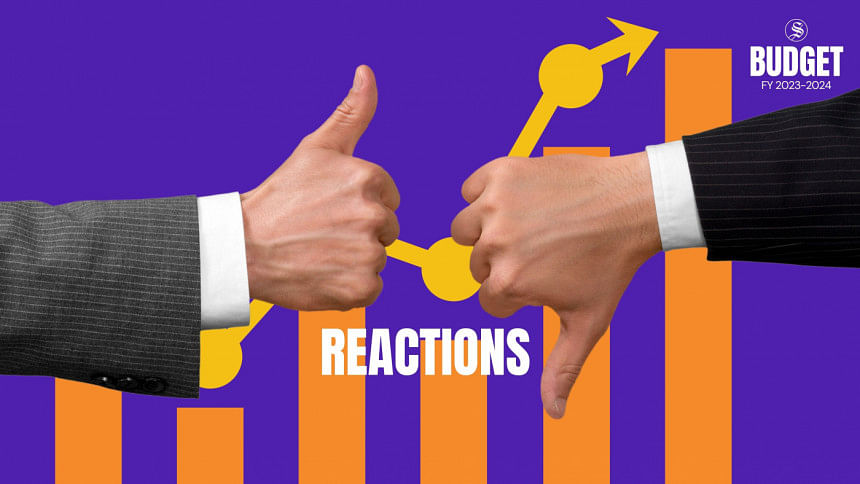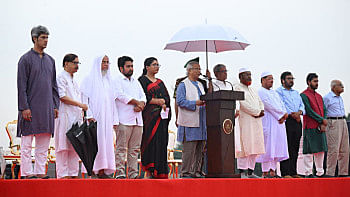FY24 budget unrealistically ambitious and disappointing

The budget document has done a routine job of presenting estimates of earnings and proposals for expenditures. In doing so, it has been cast within the framework of politically determined targets of GDP growth, inflation rate, and budget deficit. The additional consideration of meeting the conditions of IMF loan has also come in, although not explicitly mentioned.
It is well-known that this budget has been formulated against the backdrop of multiple challenges that are currently being faced by the economy of Bangladesh, viz., balance of payments deficit leading to a drain of foreign exchange reserves and deterioration in exchange rate, instability in remittance flows, sharp rise in inflation and pressures on the conditions of living of the poor and low-income people.
Given the multiplicity of challenges mentioned above, one would have expected the budget to aim at stabilizing the macroeconomy and protecting the poor and vulnerable - a budget for stabilization with a human face. But given the unrealistic targets set for GDP growth and inflation rate, it's clear that the government has not trodden that path. It is surprising to see the continuation of a growth-centric approach at a time when a rethinking and recalibration of the policy approach was needed.
Going into details, the targets for GDP growth of 7.5 per cent and inflation rate of 6 per cent in the current circumstances appear to be quite unrealistic, especially if one bears in mind the kind of policy interventions that would be needed to bring down the inflation rate, and allow exchange rate and interest rate to be determined by the market. By the way, the latter are part of the conditions of the loan taken from the IMF. There is internal inconsistency between these policies and normal rate of GDP growth. The architects of the budget should have realized this and adopted an alternative approach – viz., of macroeconomic stabilization with a lower rate of GDP growth, gradual reduction of the inflation rate and greater support for the poor and vulnerable.
Allocation for social protection has remained a subject for discussion because it includes items like pension and subsidies in certain areas. One has to separate out the amount that is meant for real social safety nets (SSN) aimed at the poor and see what is happening to that amount. Furthermore, one has to look carefully at who actually benefits from the funds allocated for such SSN programmes because they are notorious for inclusion and exclusion errors, i.e., including the non-eligible and excluding the eligibles.
When one goes into the details of SSN programmes, one can see that the amounts allocated per beneficiary are woefully inadequate. For example, the old age allowance is proposed to be raised from Tk 500 per month to Tk 600 per month – which is equivalent to just one day's wage in agriculture. And the coverage, even after the proposed increase of one lakh, is small compared to the total number of eligible candidates.
Productive and decent employment should be a major consideration in policy making for a country like Bangladesh. And yet, precious little is there in the sole paragraph devoted to the subject, except for saying, we are adopting "suitable programmes for sustainable employment". One is left to wonder what these "suitable programmes" are. Mention is made of diversifying exports, and yet not much details of how that oft-repeated goal is going to be attained.
If one talks about direct employment creation programmes which are used as part of social safety net in countries like Bangladesh, there is hardly any mention – except that the daily wage rate will be raised from Tk 200 to Tk 400. Even with this rise, it will be well below the going wage rate in agriculture and other rural economic activities.
The issues of equity and social justice continue to be ignored in the process of budget formulation – although there is a brief mention of this issue in the speech. The rhetorical nature of this mention is exemplified by the continued reliance on indirect taxes, reluctance to raise direct taxes (e.g., income tax) on the upper income groups, and neglect of wealth and inheritance taxes as means of taxing those who are capable of paying taxes. Instead of doing so, the more regressing path of relying on indirect taxes has been adopted. While efforts are needed to expand the tax net, not to think of additional measures like raising the tax rates for higher income slabs and ignoring the possibility of wealth tax are indicative of the lack of seriousness about the issue of equity and social justice.

 For all latest news, follow The Daily Star's Google News channel.
For all latest news, follow The Daily Star's Google News channel. 



Comments